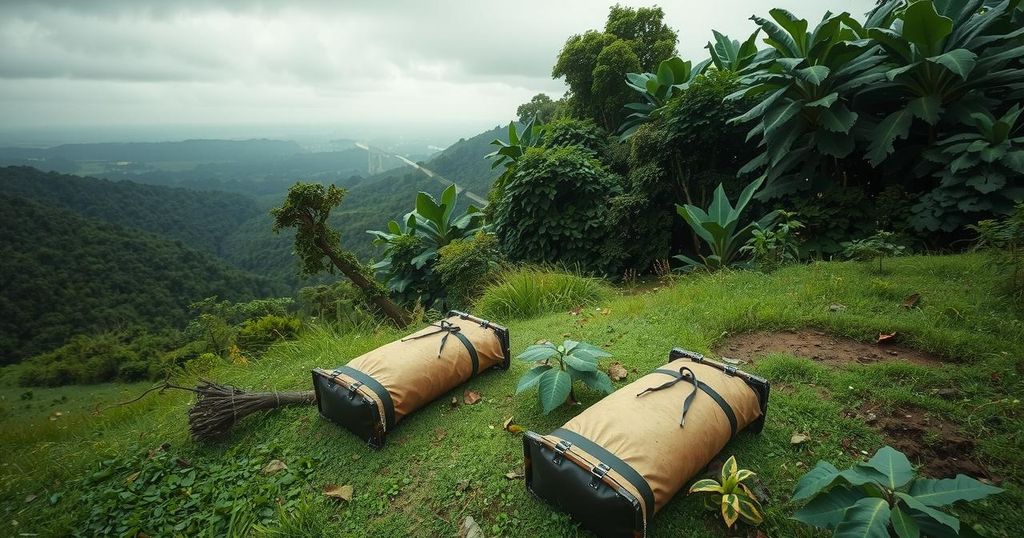Trump Misuses Reuters Image to Accuse South Africa of Violence Against White Farmers
During a meeting with South African President Ramaphosa, President Trump presented misleading evidence of mass killings of white farmers, using a screenshot from a Reuters video that actually depicted events in the Democratic Republic of Congo. The misrepresentation drew sharp criticism and raises questions about the accuracy of information regarding race relations in South Africa.
In a recent Oval Office meeting with South African President Cyril Ramaphosa, U.S. President Donald Trump presented what he claimed was evidence of mass killings of white farmers in South Africa. However, the image he showcased was a screenshot taken from a Reuters video depicting humanitarian efforts in the Democratic Republic of Congo. This unsettling revelation has attracted media scrutiny and widespread criticism, as it weaves a false narrative around the situation in South Africa.
The video in question, filmed in the city of Goma, was published back in February and displayed humanitarian workers managing body bags post-battles involving armed groups in the region. In the meeting, Trump held up a print-out from an online conservative magazine, American Thinker, asserting it as evidence of horrifying acts in South Africa. The troubling image shown to Ramaphosa lacked an accurate caption but was labeled a “YouTube screen grab” connected to the Congo video, giving rise to confusion.
After Trump’s claims, Andrea Widburg, American Thinker’s managing editor, described the use of the image as a misidentification during her correspondence with Reuters. Despite the misstep, Widburg maintained that her post highlighted the increasing tensions faced by white South Africans under Ramaphosa’s government, which she called “dysfunctional” and “race-obsessed.” The reality, however, is far removed from Trump’s dramatic assertions and the conspiracy theories fueling them.
Footage revealing the aftermath of the M23 assault depicts a somber scene in Goma, as noted by Reuters journalist Djaffar Al Katanty. He explained the difficulties of covering the event, having to secure permissions from both M23 and the International Committee of the Red Cross to film. Al Katanty expressed shock at Trump’s use of his imagery, emphasizing that it misrepresented the experience of violence in Congo as being connected to South Africa. “In view of all the world, President Trump used my image…to convince President Ramaphosa that in his country, white people are being killed by Black people,” he remarked.
Amid increasing tensions, Ramaphosa’s visit to Washington aimed to improve relations with the United States following Trump’s persistent critiques regarding South Africa’s approach to land laws and treatment of its white minority—claims flatly denied by the South African government. The controversial meeting, marked by impromptu media appearances, saw Trump display articles and videos while vocalizing an exaggerated narrative of violence against white farmers.
This ongoing saga illustrates not only the significant disconnect surrounding the realities of race relations in South Africa but also the alarming proliferation of misinformation regarding violence and persecution. The implications of these inaccuracies on both nations’ diplomatic efforts could be profound, prompting calls for more accurate portrayals of complex situations that deserve careful consideration rather than politicization.
The recent Oval Office meeting where President Donald Trump misused an image from a Reuters video has stirred serious concerns about misinformation regarding race and violence in South Africa. The footage, originally showing humanitarian efforts in Congo, was incorrectly cited to support a narrative suggesting persecution of white farmers. This incident not only highlights the stakes of accurate representation in international relations but also shows the dangerous consequences misinformation can have on diplomatic ties.
Original Source: www.newsbreak.com




Post Comment